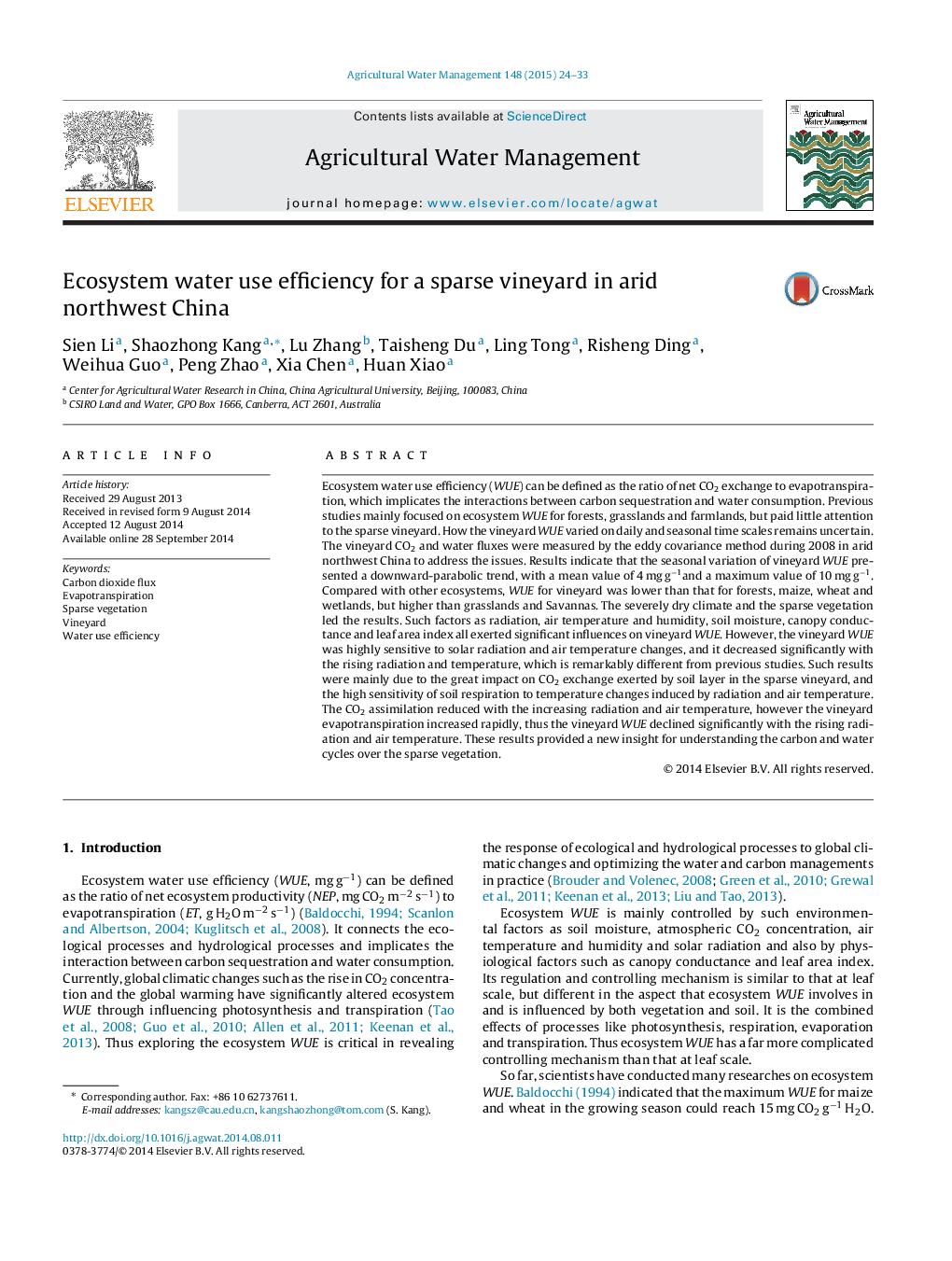| کد مقاله | کد نشریه | سال انتشار | مقاله انگلیسی | نسخه تمام متن |
|---|---|---|---|---|
| 6363790 | 1622931 | 2015 | 10 صفحه PDF | دانلود رایگان |
- Vineyard WUE is lower than that of forests, maize and wheat but higher than grasslands.
- Vineyard WUE declined significantly with the rising radiation and air temperature.
- Soil layer exerted great impact on CO2 exchange in the sparse vineyard.
Ecosystem water use efficiency (WUE) can be defined as the ratio of net CO2 exchange to evapotranspiration, which implicates the interactions between carbon sequestration and water consumption. Previous studies mainly focused on ecosystem WUE for forests, grasslands and farmlands, but paid little attention to the sparse vineyard. How the vineyard WUE varied on daily and seasonal time scales remains uncertain. The vineyard CO2 and water fluxes were measured by the eddy covariance method during 2008 in arid northwest China to address the issues. Results indicate that the seasonal variation of vineyard WUE presented a downward-parabolic trend, with a mean value of 4 mg gâ1and a maximum value of 10 mg gâ1. Compared with other ecosystems, WUE for vineyard was lower than that for forests, maize, wheat and wetlands, but higher than grasslands and Savannas. The severely dry climate and the sparse vegetation led the results. Such factors as radiation, air temperature and humidity, soil moisture, canopy conductance and leaf area index all exerted significant influences on vineyard WUE. However, the vineyard WUE was highly sensitive to solar radiation and air temperature changes, and it decreased significantly with the rising radiation and temperature, which is remarkably different from previous studies. Such results were mainly due to the great impact on CO2 exchange exerted by soil layer in the sparse vineyard, and the high sensitivity of soil respiration to temperature changes induced by radiation and air temperature. The CO2 assimilation reduced with the increasing radiation and air temperature, however the vineyard evapotranspiration increased rapidly, thus the vineyard WUE declined significantly with the rising radiation and air temperature. These results provided a new insight for understanding the carbon and water cycles over the sparse vegetation.
Journal: Agricultural Water Management - Volume 148, 31 January 2015, Pages 24-33
